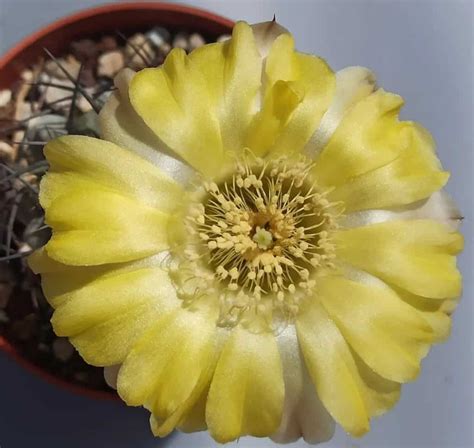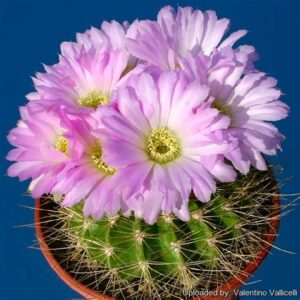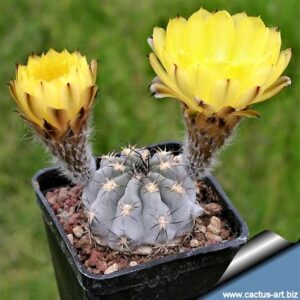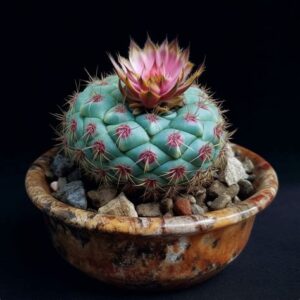Acanthocalycium glaucum is an exquisite species of cactus that captivates both novice collectors and seasoned horticulturists alike. With its striking appearance and intriguing characteristics, it has garnered attention across various gardening communities. This complete growing and care guide aims to provide comprehensive insights into this remarkable plant, addressing key concerns for potential buyers, and offering detailed cultivation techniques.
Originating from the arid landscapes of Argentina, Acanthocalycium glaucum displays a unique blend of resilience and beauty. It is characterized by its spherical to slightly elongated shape, adorned with prominent tubercles, and a spine pattern that can evoke admiration. As an ideal addition to rock gardens, windowsills, or even as a standout in succulent arrangements, mastering the cultivation of this species is essential for any enthusiast.
Understanding Acanthocalycium Glaucum: Features and Benefits
To cultivate Acanthocalycium glaucum successfully, one must first appreciate its defining features. The plant commonly showcases a bluish-green hue, owing to the waxy coating known as the cuticle. This feature not only lends an aesthetic appeal but also serves a functional purpose, helping to retain moisture in its native environment.
The spines range from golden-yellow to reddish-brown, forming a conspicuous halo that enhances the plant’s visual allure. Beyond its aesthetic properties, Acanthocalycium glaucum also offers practical benefits. Its rounded shape and moderate growth rate make it an excellent choice for those with limited space. Furthermore, it can thrive in various conditions, making it suitable for diverse cultivation scenarios.
Essential Growing Conditions for Acanthocalycium Glaucum
Creating the optimal environment for Acanthocalycium glaucum is a critical step towards ensuring its health and longevity. This cactus thrives in conditions that mimic its natural habitat, which consists of warm temperatures and ample sunlight.
Light Requirements:
Acanthocalycium glaucum flourishes in bright, indirect sunlight. While it can tolerate direct sunlight, excessive exposure can lead to sunburn and damage. Placing it near a south- or west-facing window is ideal. If natural light is insufficient, consider using grow lights to supplement the plant’s light needs, particularly during the shorter days of winter.
Temperature Preferences:
Temperature plays an integral role in the overall health of Acanthocalycium glaucum. Ideal temperatures range between 70°F to 85°F (21°C to 29°C) during the growing season. It can tolerate slightly cooler temperatures in the winter, but it should never be exposed to freezing conditions as this can lead to cellular damage or rot. A consistent range that avoids extremes is vital for sustaining its vigor.
Soil Composition:
Proper soil selection is paramount for successful cultivation. Acanthocalycium glaucum requires well-draining soil to prevent water accumulation, which can cause root rot. A mixture of cactus potting soil with additional perlite or coarse sand creates an ideal substrate that allows for proper drainage while still retaining some moisture. This combination replicates the sandy soils of its native habitat, offering optimal growth conditions.
Watering Techniques:
Watering is a delicate balancing act when it comes to Acanthocalycium glaucum. During the growing season (spring and summer), it should be watered thoroughly but infrequently, allowing the soil to dry out completely between waterings. A general rule of thumb is to water once every two to three weeks, depending on environmental factors such as humidity and light exposure. In the fall and winter months, reduce watering further, as the plant enters a dormant phase and requires minimal moisture.
Fertilization and Nutrient Needs
While Acanthocalycium glaucum is not a heavy feeder, a balanced fertilization schedule can promote optimal growth during its active growing period. Using a diluted liquid cactus fertilizer every four to six weeks in the spring and summer can provide the necessary nutrients without overwhelming the plant.
In contrast, during the dormant months, it is advisable to abstain from fertilization altogether. This practice allows the cactus to conserve energy and encourages natural growth rhythms.
Pest and Disease Management
Prevention is key when maintaining the health of Acanthocalycium glaucum. Common pests such as mealybugs, scale insects, and spider mites can pose threats to the plant’s well-being. Regularly inspecting the cactus for signs of infestation is vital. If pests are detected, treat them with an insecticidal soap or neem oil, ensuring to follow the manufacturer’s instructions.
Moreover, overwatering can lead to conditions such as root rot or fungal infections. It is essential to heed the watering requirements outlined previously and regularly check soil moisture levels. If root rot occurs, it may be necessary to repot the cactus, removing any affected roots and allowing it to dry before replanting.
Propagation Techniques for Acanthocalycium Glaucum
Propagation of Acanthocalycium glaucum can be achieved through seeds or offsets, with offsets being the more straightforward method for many gardeners. Offsets form at the base of the plant and can be gently removed with clean, sterilized tools. Allow the cut surface to callous for a few days before placing it back in well-draining soil.
When propagating from seeds, ensure to use a sterile seed-starting mix. Sow seeds on the surface, gently mist with water, and cover them with a thin layer of soil. Maintain high humidity and warm temperatures until the seeds germinate, which can take anywhere from a few weeks to a couple of months.
Conclusion: The Allure of Acanthocalycium Glaucum
In conclusion, Acanthocalycium glaucum is a captivating cactus that seamlessly blends beauty and resilience. Its modest care requirements, alongside stunning aesthetics, make it a desirable choice for any succulent enthusiast. Understanding the essential growing conditions, such as light, temperature, and watering, enhances your ability to cultivate this remarkable species successfully.
By implementing judicious watering practices, choosing the right soil, and engaging in proper pest management, you ensure a thriving Acanthocalycium glaucum. Whether housed on a windowsill or nestled in a landscaped garden, this cactus is sure to draw admiration and appreciation, elevating your plant collection or gardening space with its presence.
As you embark on your journey with Acanthocalycium glaucum, remember the inherent charm this cactus brings to any environment. By cultivating with knowledge and care, you will undoubtedly enjoy the flourishing rewards of your efforts.





Leave a Comment